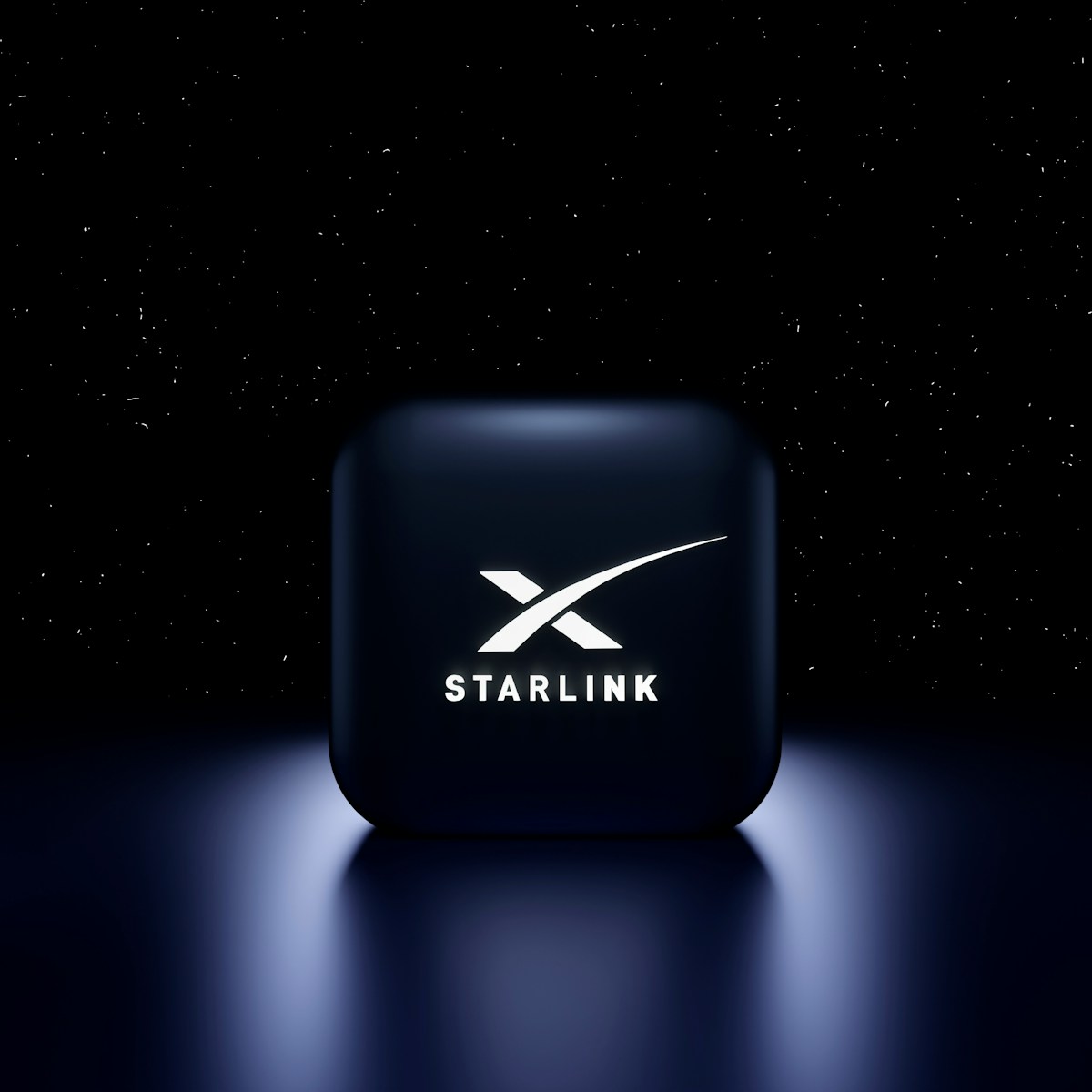Looking for satellite internet for your rural home? Choosing between the top three providers can be tricky. While all three offer service in remote locations, they differ significantly in speed, price, and reliability.
Starlink delivers the fastest speeds but costs more, while HughesNet offers a budget-friendly option with more modest performance, and Viasat falls somewhere in the middle with a good balance of speed and value. If you’re currently stuck with slow HughesNet service, many users report that switching to Starlink feels like moving from dial-up to broadband – the difference can be that dramatic.
The technology behind these services also sets them apart. Starlink uses a large network of low-Earth orbit satellites for lower latency, while both HughesNet and Viasat use geosynchronous satellites positioned much farther from Earth. This key difference impacts everything from gaming performance to video calls.
Starlink vs. HughesNet vs. Viasat
Satellite internet has evolved dramatically in recent years. Whether you live in a rural area or travel frequently, choosing the right provider can make a huge difference in speed, reliability, and cost.
This guide compares Starlink, HughesNet, and Viasat — the three main players in satellite internet — to help you decide which one best fits your needs.
🌐 Overview
| Provider | Type of Satellite | Typical Download Speeds | Latency | Monthly Data | Price Range (USD) | Best For |
|---|---|---|---|---|---|---|
| Starlink | Low Earth Orbit (LEO) | 50–250 Mbps | 25–60 ms | Unlimited (soft cap) | $120–$150 | Fast, low-latency internet for rural homes & RVs |
| HughesNet | Geostationary Orbit (GEO) | 15–100 Mbps | 600–800 ms | 100–200 GB | $50–$150 | Basic browsing and email in remote areas |
| Viasat | Geostationary Orbit (GEO) | 25–150 Mbps | 500–700 ms | 100–300 GB | $70–$200 | Moderate-speed internet with flexible data plans |
(Data compiled from 2025 provider updates and independent testing by PCMag and Ookla.)
🚀 1. Starlink
Starlink, operated by SpaceX, uses a Low Earth Orbit (LEO) satellite constellation to deliver high-speed, low-latency internet.
Pros
- Fastest satellite internet available (up to 250 Mbps).
- Low latency suitable for gaming and video calls.
- Expanding global coverage, including mobile and maritime service.
- No hard data caps (though speeds may slow after high usage).
Cons
- Higher upfront equipment cost (~$599).
- Requires clear sky view for best performance.
- Service can occasionally fluctuate during heavy network load.
Ideal For:
Rural users, digital nomads, RV owners, and remote workers who need broadband-like performance.
🌍 2. HughesNet
HughesNet, one of the oldest satellite internet providers, uses Geostationary Orbit (GEO) satellites positioned 22,000 miles above Earth.
Pros
- Reliable coverage across the U.S. and Latin America.
- Affordable entry-level plans.
- New Fusion plans combine satellite + wireless for lower latency.
Cons
- Slower speeds (max 100 Mbps).
- High latency affects gaming and video calls.
- Strict data caps with reduced speeds after limit.
Ideal For:
Casual users who mainly browse, email, and stream in standard definition.
🌎 3. Viasat
Viasat also uses GEO satellites, offering higher data limits and faster speeds than HughesNet in some areas.
Pros
- Speeds up to 150 Mbps in select regions.
- Larger data allowances than HughesNet.
- Bundled plans available with TV or phone services.
Cons
- High latency (not ideal for gaming or real-time calls).
- Prices can increase after promotional period.
- Data throttling once monthly allowance is reached.
Ideal For:
Families or small businesses in rural areas needing more data for streaming and downloads.
⚖️ Starlink vs. HughesNet vs. Viasat: Key Differences
| Feature | Starlink | HughesNet | Viasat |
|---|---|---|---|
| Technology | LEO | GEO | GEO |
| Speed Range | 50–250 Mbps | 15–100 Mbps | 25–150 Mbps |
| Latency | 25–60 ms | 600–800 ms | 500–700 ms |
| Data Policy | Unlimited (soft cap) | 100–200 GB | 100–300 GB |
| Equipment Cost | ~$599 | ~$300 | ~$300 |
| Contract | No contract | 2 years | 2 years |
| Best Use Case | High-speed, modern internet | Basic connectivity | Heavy streaming with data flexibility |
💡 Which One Should You Choose?
- Choose Starlink if you want fast, low-latency internet similar to cable or fiber — ideal for remote work, streaming, and gaming.
- Choose HughesNet if you need budget-friendly, reliable connectivity for light use.
- Choose Viasat if you need larger data plans and decent speeds but can tolerate higher latency.
🧭 Final Verdict
In 2025, Starlink continues to lead the satellite internet market thanks to its LEO technology, which delivers broadband-like performance. However, HughesNet and Viasat remain solid options for users in extremely remote areas or those seeking lower-cost plans.
If speed and performance matter most — go with Starlink.
If affordability and coverage are your top priorities — HughesNet or Viasat may suit you better.
Sources:
- PCMag: Starlink Review
- Orbital Xploration: Satellite Internet Providers Compared 2025
- Reviews.org: Viasat vs HughesNet
- TechBlog: GEO vs LEO Satellite Internet Performance
Key Takeaways
- Starlink offers the fastest speeds and lowest latency but at a higher price point than competitors.
- HughesNet provides the most reliable speeds and budget-friendly plans for basic internet needs.
- Viasat balances speed and cost with attractive unlimited data options that neither competitor matches perfectly.
Overview of Satellite Internet Providers
Satellite internet provides connectivity for rural and remote locations where traditional options aren’t available. Three major providers dominate this market, each with unique technology approaches, speed capabilities, and pricing structures.
Starlink
Starlink represents the newest revolution in satellite internet technology. Unlike traditional providers, Starlink uses a constellation of low Earth orbit satellites positioned only about 340 miles above Earth. This proximity creates a huge advantage for users.
The most notable benefit is significantly lower latency. While other providers struggle with high ping rates, Starlink delivers far less latency than its competitors. This makes online gaming, video calls, and real-time applications much more responsive.
Speed is another strong point. Starlink offers download speeds that routinely exceed 100 Mbps in many areas, with some users reporting even higher performance. This puts it more in league with traditional broadband than older satellite services.
The main drawbacks include higher equipment costs and occasional service interruptions. The system is also still expanding its coverage, though availability grows monthly.
HughesNet
HughesNet stands as one of the longest-established satellite internet providers. It uses satellites in high Earth orbit (HEO) approximately 22,000 miles overhead, which affects its performance characteristics.
Service plans are straightforward with three tiers offering up to 100 Mbps download speeds. This recent speed upgrade makes HughesNet more competitive than in previous years. Each plan comes with a set data allowance before speeds are reduced.
Latency remains a challenge with HughesNet. Connection response times typically range from 600 to 800 milliseconds, which can make real-time applications difficult to use effectively.
HughesNet’s primary advantages include wide availability across the continental US, Alaska, and Puerto Rico. The service is known for reliable speeds that consistently match what’s advertised. Equipment costs are also typically lower than Starlink.
Viasat
Viasat offers perhaps the most direct competition to both Starlink and HughesNet. Like HughesNet, Viasat uses high Earth orbit satellites but distinguishes itself with diverse plan options and higher data allowances.
Speed options with Viasat are more varied, with plans reaching well beyond 100 Mbps in select areas. This higher range of speeds gives customers more choices based on their needs and budget.
The company’s unlimited data plans are particularly attractive for heavy internet users. While these plans do include priority data amounts before potential slowdowns, they avoid strict data caps.
Latency performance sits between 500 and 700 milliseconds, slightly better than HughesNet but still significantly higher than Starlink. Pricing typically runs higher than HughesNet, especially for the higher-tier plans with more data and faster speeds.
Comparative Analysis
Satellite internet options differ significantly in speed, cost, and performance. Each provider brings unique advantages that may benefit different types of users depending on their specific needs.
Internet Speeds
Starlink leads the pack with much faster download speeds than its competitors. Users typically experience 50Mbps or higher, with some reporting speeds over 100Mbps.
Viasat offers more speed tiers than HughesNet, with its top plans reaching up to 50Mbps. This puts it in the middle range between Starlink and HughesNet.
HughesNet provides more consistent but slower speeds. All HughesNet plans offer about 25Mbps download speeds regardless of the package you choose.
Speed comparison at a glance:
- Starlink: 50-150+ Mbps
- Viasat: 12-50 Mbps
- HughesNet: 25 Mbps
For users who need fast connections for video calls, gaming, or multiple devices, Starlink’s speed advantage is hard to ignore.
Pricing and Plans
HughesNet positions itself as the budget choice among satellite providers. Plans start lower but offer less data at the base level.
Viasat falls in the middle price range. They offer several plans with different data allowances, though prices may increase after promotional periods end.
Starlink is the most expensive option with higher upfront equipment costs. The basic service costs $110/month plus $599 for equipment.
Price comparison:
| Provider | Monthly Cost | Equipment Cost | Data Caps |
|---|---|---|---|
| Starlink | $110 | $599 | Unlimited* |
| Viasat | $50-$150 | $299 or lease | Priority data, then slowed |
| HughesNet | $65-$150 | $249 or lease | 15-100 GB, then slowed |
*Starlink may apply fair use policies but generally offers unlimited data.
Availability and Coverage
Starlink’s coverage continues to expand as SpaceX launches more satellites. It works well in northern regions where traditional satellite services struggle.
The service is still rolling out globally but has become available in many rural areas across North America, parts of Europe, and other regions.
Viasat and HughesNet offer more established coverage across the continental United States. They’ve been operating longer and have stable coverage footprints.
Both traditional providers can serve almost any location with a clear view of the southern sky in their service areas.
For very remote locations, coverage differences may determine which service is available. Users should check each provider’s coverage maps before making a decision.
Latency and Performance
Latency (signal delay) creates one of the biggest differences between these providers. Starlink has significantly lower latency of 20-40ms in most cases.
Viasat users typically experience 500-700ms latency, while HughesNet ranges from 600-800ms. This difference dramatically affects real-time activities.
Low latency makes Starlink much better for:
- Online gaming
- Video conferencing
- Voice calls
- Remote work applications
HughesNet offers reliable speeds but with higher latency. This makes it suitable for basic browsing and email but less ideal for interactive tasks.
Viasat can handle video streaming fairly well with its higher speeds, but still struggles with real-time applications due to high latency.
Weather affects all satellite services, but Starlink seems more vulnerable to interruptions during heavy storms compared to the traditional providers.
Technological Infrastructure and Innovations
Each satellite internet provider uses distinct technology approaches that directly impact user experience. The physical hardware, orbital placement, and network design create significant differences in speed, reliability, and latency.
Satellite Technology Differences
Starlink stands apart with its low Earth orbit (LEO) satellite constellation, positioned just 340-1,200 miles above Earth. This proximity delivers dramatically lower latency compared to competitors. Most users experience ping rates of 20-40ms, making real-time applications like video calls and online gaming possible.
HughesNet and Viasat both use geostationary (GEO) satellites orbiting 22,236 miles from Earth. This extreme distance creates their biggest technical challenge: high latency. Viasat typically shows 500-700ms latency, while HughesNet runs slightly higher at 600-800ms.
The physical satellites differ too. Starlink uses smaller, mass-produced satellites with phased array antennas. Viasat’s fewer but more powerful satellites feature spot-beam technology for targeted coverage. HughesNet’s Jupiter system focuses on reliability over pure speed.
Network Capacity and Expansion
Starlink’s approach relies on volume – thousands of satellites creating a mesh network. This strategy enables speeds up to 220Mbps, far outpacing competitors. By March 2025, the constellation includes over 5,000 operational satellites with thousands more planned.
Expansion Comparison:
| Provider | Current Coverage | Future Plans |
|---|---|---|
| Starlink | Global (with gaps) | 42,000 satellites |
| Viasat | Americas, Europe, MENA | ViaSat-3 global coverage |
| HughesNet | Americas | Limited expansion |
Viasat’s ViaSat-3 platform aims to boost capacity dramatically with three ultra-high-capacity satellites. Each provides over 1 Terabit per second of throughput – a significant jump from previous generations.
HughesNet’s expansion moves more cautiously, focusing on service reliability over coverage growth. Their Jupiter system emphasizes consistent performance in existing service areas rather than rapid expansion.
Customer Experience and Support
Customer satisfaction varies greatly among the three satellite internet providers. Starlink users report better experiences compared to traditional satellite options, mainly due to faster speeds and lower latency.
HughesNet and Viasat both offer 24/7 phone support, which some customers find helpful. However, both companies have received criticism for long wait times and challenging customer service experiences.
Support Options Comparison:
| Provider | Phone Support | Chat Support | Community Forums | |
|---|---|---|---|---|
| Starlink | Limited | Yes | Yes | Active user community |
| HughesNet | 24/7 | Yes | Yes | Basic forums |
| Viasat | 24/7 | Yes | Yes | Limited community |
Equipment issues can cause headaches with all three providers. Starlink’s self-installation process is straightforward but may be challenging for less tech-savvy users.
Many HughesNet customers complain about billing problems and unexpected fees. This creates frustration even when the service works as expected.
Viasat falls somewhere in the middle for customer satisfaction. They offer professional installation, which many customers appreciate. However, their price increases after promotional periods often lead to complaints.
Wait times for installation differ significantly:
- Starlink: Days to months (depending on area availability)
- HughesNet: Usually within a week
- Viasat: Typically 2-5 business days
Contract terms also impact customer experience. Viasat and HughesNet require long-term commitments, while Starlink offers month-to-month service with no contracts.
Frequently Asked Questions
Satellite internet services differ greatly in price, speed, and data allowances. Customer experiences also vary based on location and specific needs.
What are the pricing differences between Starlink, HughesNet, and Viasat?
Starlink is typically the most expensive option with equipment costs of $599 and monthly fees ranging from $110-$120. The high upfront cost can be a barrier for some customers.
HughesNet positions itself as the budget choice with lower monthly rates starting around $65-$150 depending on the plan. Equipment costs are usually lower but may require a contract.
Viasat falls between the two competitors with monthly fees ranging from $50-$300 based on speed and data allowances. Their pricing structure often includes promotional rates that increase after the first few months.
How do the internet speeds of Starlink compare with HughesNet and Viasat?
Starlink delivers significantly faster speeds, typically ranging from 50-200 Mbps download and 10-20 Mbps upload. This makes it suitable for streaming, video calls, and online gaming.
HughesNet offers more consistent but slower speeds of about 25 Mbps download and 3 Mbps upload. These speeds remain the same across all plans regardless of price.
Viasat advertises speeds between 12-100 Mbps download depending on the plan and location. However, actual speeds may vary and often decrease during peak usage times.
Which satellite internet provider offers the best overall value?
Starlink provides the best value for users who need high speeds and low latency, especially those who work from home, game online, or stream high-definition content.
HughesNet works well for basic internet users on a budget who mainly browse, check email, and occasionally watch videos at standard definition.
Viasat offers good middle-ground value with higher data allowances than HughesNet and better speeds in some locations, though not matching Starlink’s performance.
Are there differences in data caps among Starlink, HughesNet, and Viasat?
Starlink currently offers unlimited data with no hard caps, though they have a “fair use” policy that may throttle extremely heavy users.
HughesNet plans come with set data allowances ranging from 15 GB to 75 GB per month. After reaching this limit, speeds slow dramatically to 1-3 Mbps until the next billing cycle.
Viasat advertises unlimited data plans, but most include “priority data” thresholds between 40-150 GB. Once exceeded, users experience reduced speeds during network congestion.
What are the coverage and availability distinctions between Starlink, HughesNet, and Viasat services?
Starlink coverage continues to expand but may have waitlists in some areas. The service works anywhere with a clear view of the northern sky in its service areas.
HughesNet and Viasat offer nearly complete coverage across the continental United States, making them available in most rural areas immediately.
All three providers require different installation setups. Starlink needs a clear view of the sky with minimal obstructions like trees or tall buildings.
How do customer satisfaction ratings for Starlink, HughesNet, and Viasat compare?
Starlink users report high satisfaction with speed and reliability, though some mention concerns about price and occasional service interruptions during bad weather.
HughesNet customers often cite frustration with slow speeds and strict data caps, but appreciate the reliability and consistent pricing structure.
Viasat receives mixed reviews, with praise for higher data allowances than HughesNet but complaints about speed throttling and price increases after promotional periods end. Weather impacts all satellite services, but newer Starlink technology seems less affected than traditional providers.







